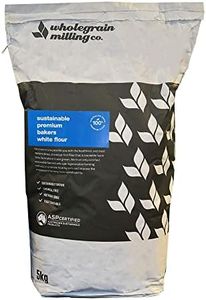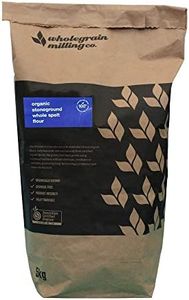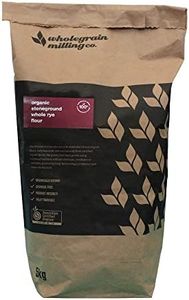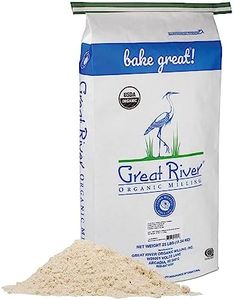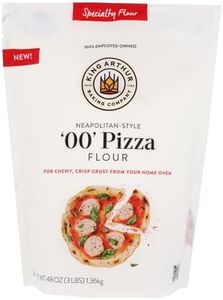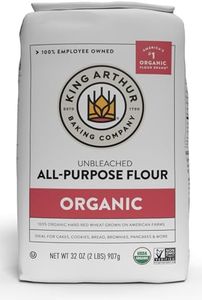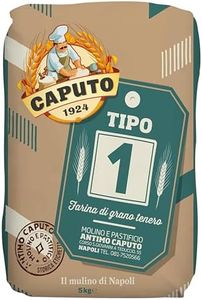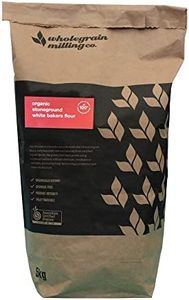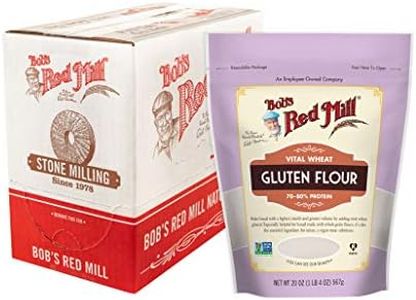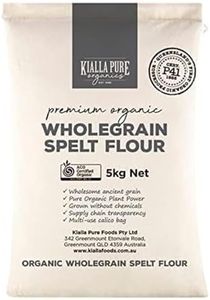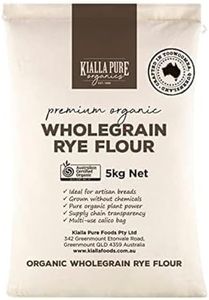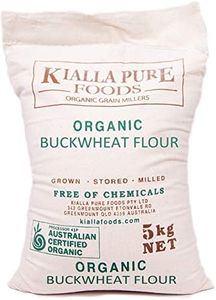We Use CookiesWe use cookies to enhance the security, performance,
functionality and for analytical and promotional activities. By continuing to browse this site you
are agreeing to our privacy policy
10 Best Bread Flours
From leading brands and best sellers available on the web.By clicking on a link to a third party's website, log data is shared with that third party.
Buying Guide for the Best Bread Flours
When choosing bread flour, it’s important to understand how the characteristics of different flour types can affect your baking. The right flour can make a huge difference in the texture, rise, and flavor of your bread. Start by identifying what kind of bread you want to make—loaf, artisan, whole wheat, or specialty—and consider how each flour’s properties can help achieve the best results for your recipe and skill level.Protein ContentProtein content in bread flour refers to the percentage of protein present in the flour, typically between 10% and 14%. This is crucial because higher protein flours form more gluten when combined with water and kneaded, giving bread its structure and chewiness. Lower protein flour results in softer, more tender baked goods. If you want crusty, chewy breads like sourdough or baguettes, go for higher protein flours (12-14%), while softer breads or enriched loaves like brioche benefit from slightly lower protein content (10-12%).
Type of WheatBread flours can come from hard wheat or soft wheat, and sometimes a blend. Hard wheat varieties are higher in protein and ideal for most yeast breads, providing strength and elasticity in the dough. Soft wheat is lower in protein and results in a more tender crumb, which is better for cakes or pastries. Choose flours labeled 'hard wheat' for artisan and sandwich breads, and 'soft wheat' flours if you want softer, more delicate breads.
Whole Grain vs. RefinedWhole grain flours contain all parts of the wheat kernel (bran, germ, and endosperm), resulting in a denser texture and richer flavor, as well as added nutrition. Refined flours have been stripped of bran and germ, producing lighter bread with a milder taste. If you prefer a hearty, nutritious loaf, opt for whole grain flours. For lighter, fluffier bread, refined white bread flour is a better fit.
Enrichment and AdditivesSome bread flours have added vitamins and minerals, known as enrichment, or dough conditioners to improve rise and texture. Enriched flours are often required by law in some countries to restore nutrients lost during processing. If nutrition is important to you, or you want more consistent results with less effort, look for 'enriched' or 'conditioned' bread flours. Pure, unenriched flours offer more control for bakers who want to adjust recipes themselves.
Gluten StrengthGluten strength refers to the quality and quantity of gluten the flour will produce, which affects how well the dough can trap gases and rise. Some flours are marketed specifically for their strong gluten development. If you often bake heavy or high-rising breads, seek out flours with a reputation for strong gluten. Lighter pan loaves or rolls may need a gentler gluten structure.
Bleached vs. UnbleachedBleached flour is treated to give it a whiter color and softer texture, while unbleached flour is aged naturally. Bleaching can affect both flavor and structure, sometimes resulting in a finer crumb. If you prefer traditional methods or a more robust flavor, choose unbleached bread flour. Bleached bread flour can be more convenient for tender, light breads, but is less commonly used in artisan baking.

